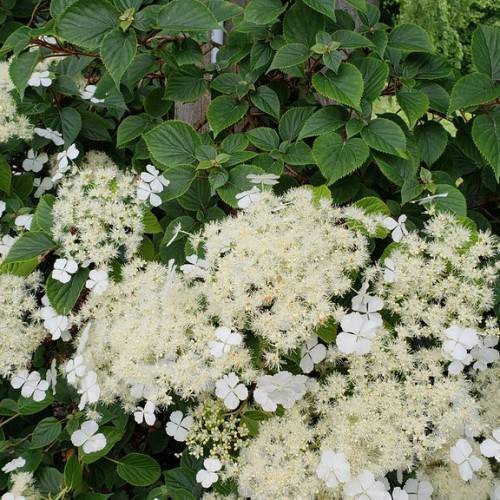
climbing hydrangea
Hydrangea anomala subsp. petiolaris
Cycle:
Perennial
Watering:
Average
Hardiness Zone:
4 - 8
Flowers:
Flowers
Sun:
Part shade,full shade
Leaf:
Yes
Growth Rate:
Low
Maintenance:
Low
Drought Tolerant:
Yes
Thorny:
Yes
Care Level:
Medium
watering
Climbing hydrangeas typically need moderately moist soil to thrive. During the first growing season, they should be watered once a week. After that, they need less frequent watering during the summer months. In general, during the growing season, give the plant approximately 1 inch of water per week in total. This can be accomplished through an occasional deep soak or a few lighter waterings during the week. In periods of drought, it may need more water. In the winter months, reduce the watering to once or twice a month. This will help keep the soil from becoming waterlogged, and will help prepare it for the next growing season.
sunlight
Climbing hydrangeas thrive in bright, indirect sunlight, meaning that 3-4 hours of full sun or partial sun per day is ideal. It's important to avoid midday sun when possible as it can scorch the plant and cause its leaves to become brown and crispy. If you're growing your hydrangea in a container, choose 1 that is large enough to provide ample soil for the roots to stay cool and doesn’t become too hot in the sun. Morning and late afternoon sunlight are the best times for your climbing hydrangea to receive sunlight, and placing your container in a spot that also receives filtered light throughout the day will help to ensure that your plant stays healthy and happy.
pruning
Climbing Hydrangea should be pruned during the early spring or late winter, when the plant is still dormant. As soon as the last frost has passed and the plant has started to produce new buds, it's time to get pruning. Generally, you should remove any dead, damaged, or diseased stems and thin out the remaining stems to improve air circulation and shape. Young plants should be pruned to remove any weak side branches and to shape the overall form. With more mature plants, simply remove some of the oldest stems at ground level to encourage new growth and flowering. Avoid removing more than a third of the growth at a time and don't prune off the tips of the stems. You should also avoid pruning during the summer, as this can lead to excessive growth which could result in the plant being top heavy.
